Sauermann COST-S Handleiding
Sauermann
Niet gecategoriseerd
COST-S
Bekijk gratis de handleiding van Sauermann COST-S (4 pagina’s), behorend tot de categorie Niet gecategoriseerd. Deze gids werd als nuttig beoordeeld door 2 mensen en kreeg gemiddeld 4.5 sterren uit 1.5 reviews. Heb je een vraag over Sauermann COST-S of wil je andere gebruikers van dit product iets vragen? Stel een vraag
Pagina 1/4

COST-S
CO Stats
CO detector
DATA SHEET
Parameter Accuracy Measuring range Resolution*
CO ±3 ppm or 3% of the reading value From 0 to 500 ppm 0.1 ppm
Technical features
*All the accuracies indicated in this technical datasheet were stated in laboratory conditions, and can be guaranteed for measurements carried out in the same conditions, or carried out with calibration compensation.
Features
• RCR relay output,
3 A / 240 Vac (NC),
power supply 24 Vac/Vdc
• ABS V0 IP20 housing
• “¼ turn” system mounting
with wall-mount plate
• Housing with simplied
mounting system
Visual and audible alarm,
red led in front
Measuring range
from 0 to 500 ppm
CO
CO
Output 1 RCR relay. NO (normally opened): 5A / NC (normally closed): 3A / 240 Vac.Common mode voltage <30 Vac
Power supply 24 VAC/VDC ±10%
Consumption 3 VA
Relay and alarm status Red led in front and internal buzzer (70 dB at 10 cm)
European directives 2014/30/EU EMC; 2014/35/EU Low Voltage; 2011/65/EU RoHS II; 2012/19/EU WEEE
Electrical connection Terminal block for cables Ø0.05 to 2.5 mm
2
. Carried out according to the code of good practice
PC communication USB-mini Din cable
Environment Air and neutral gas
Measured parameter

Unit of measurement ppm
Type of sensor Electrochemical sensor
Life-time of the sensor 5 years
Response time T
63
= 35 s
Type of uid Air et gaz neutre
Conditions of use
(°C/%RH/m)
From 0 to +50°C. In non-condensing condition.
From 0 to 2000 m.
Storage temperature From -10 to +70°C
General features
Material ABS V0 as per UL94
Protection IP20
Display
LCD 10 digits. Size: 50 x 17 mm
Height of digits:
Values: 10 mm; Units: 5 mm
Weight 138 g
Features of the housing
Connections
Inside the front housing
Removable front face
Fixed back housing
1
2 3
4
5
6
7
8
Electrical connections as per NFC15-100 standard
NO COM NC
1 2 3 4 5 6 7
-
+
Power supply
24 Vdc
or
N L
N L
~ ~
~ ~
6 7
Power supply
24 Vac
Class II
This connection must be made by a
qualied and trained technician. To make
the connection, the transmitter must not
be energized.
Settings and use of the transmitter
• Thresholds conguration
The button allows to activate or not an alarm (threshold), to set the action of the alarm (edge), to set the threshold(s) value, to
set the time-delay and to acknowledge the alarm.
Working principle:
- By pressing on the button more than 3 seconds, you can validate the setting and go to the next setting.
- By pressing quickly on the button, you can increment a value and scroll down the different option or values.
NO: normally opened
COM: common
NC: normally closed
1. Electrochemical sensor
2. Inactive switch
3. Active switch
4. LCC-S software connection
5. Alarm led
6. Button for settings
7. Relay terminal block
8. Power supply terminal block
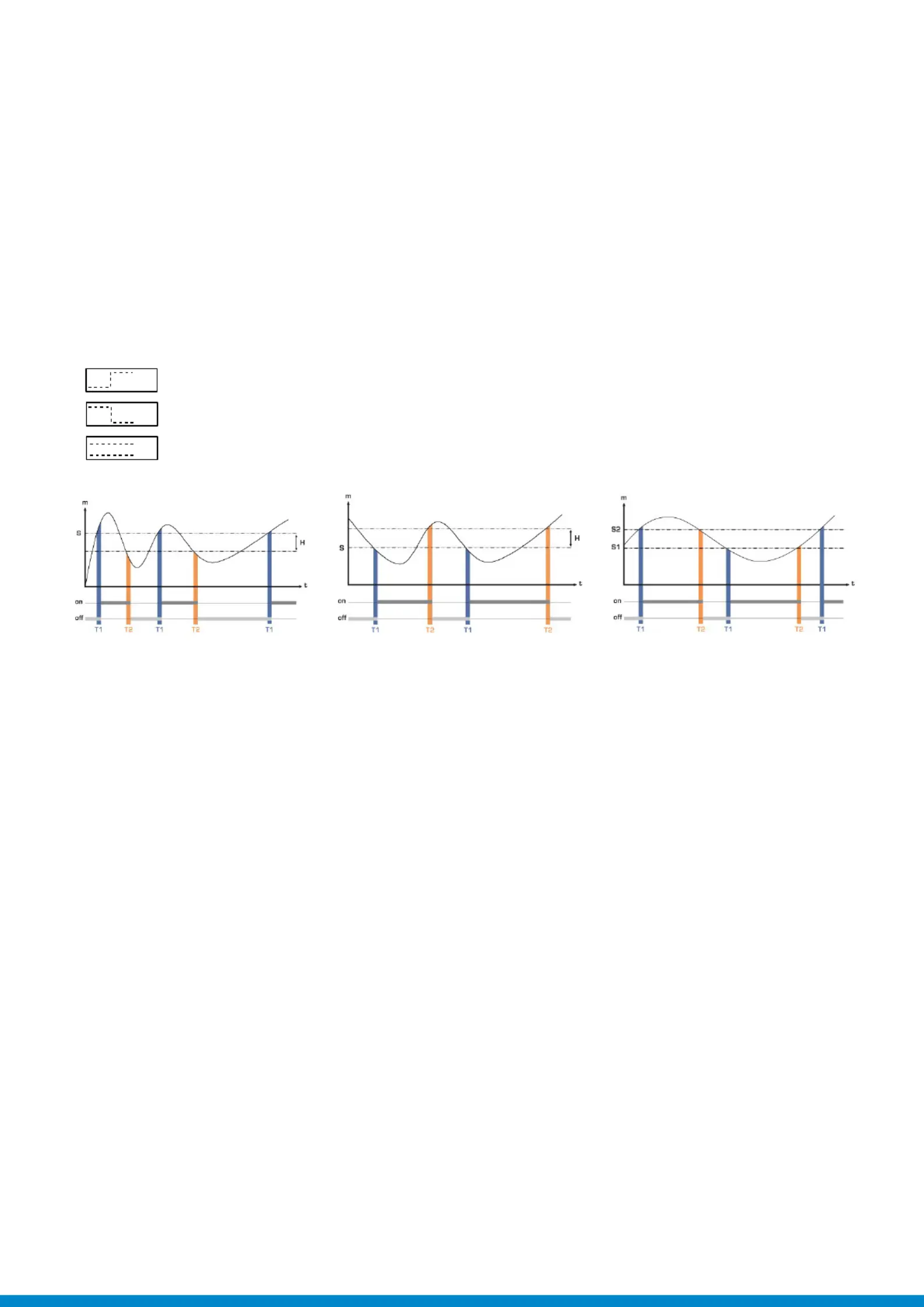
• Activate or deactivate an alarm
- Press on the button for 3 seconds, is displayed then , meaning that the relay is in negative security, it is excited “CONF” “NEG”
during an alarm condition.
- If needed, press quickly on the button to switch the relay in positive security, the relay is de-energized during an alarm condition or a
current breaking, is displayed.“POS”
- Press 3 s on the button, screen is displayed with or blinking. Briey press on the button to activate ( ) or “Buzz” “ON” “OFF” “ON”
deactivate ( ) (according to the last saved conguration) the buzzer during an alarm condition.“OFF”
- Press 3 s on the button, “Alarm” “On” “Off” screen is displayed with or blinking (according to the last saved conguration).
- Press quickly on the button, the display changes from (activated alarm) to “On” “Off” (deactivated alarm).
- Press 3 seconds on the button to conrm the setting. If the alarm is deactivated, the instrument displays the measurement; if the
alarm is activated, the instrument displays the following setting.
• Set the action of the alarm (rising edge or falling edge)
The edge determines the action of the alarm according to the trespassing direction of the threshold(s).
Rising edge(1 threshold): the alarm goes off when the measurement exceeds the threshold and stops when it is
below the threshold.
Falling edge(1 threshold): the alarm goes off when the measurement is below the threshold and stops when it
exceeds the threshold.
Monitoring (2 thresholds): the alarm goes off when the measurement is outside the dened low and high thresholds.
Mode
Mode
Mode
Measurement (m) > Threshold (S) during the time-
delay T1: Alarm activation.
Measurement (m) < Threshold (S) - Hysteresis (H)
during the time-delay T2: Alarm deactivation.
Measurement (m) < Threshold (S) during the time-
delayT1: Alarm activation.
Measurement (m) > Threshold (S) + Hysteresis (H)
during time-delay T2: Alarm deactivation.
The alarm goes off when the measurement is
outside the low and high thresholds.
Rising edge Falling edge Monitoring
- Press briey on the button to select the trespassing direction then press the button more than 3 seconds to validate this direction
and set the thresholds.
• Set the threshold(s) value
The rst digit blinks, it corresponds to the positive (0) or negative (-) setting of the threshold value.
Press briey the button to select the sign for the threshold value. Press on the button more than 3 seconds to validate.
The second digit blinks, press briey on the button to scroll the numbers. Press the button more than 3 seconds to validate.
Repeat the process until the last digit to congure the threshold value, validate the threshold and go to the following setting.
If the monitoring edge has been selected, the transmitter displays the setting of the second threshold.
• Set the hysteresis
The hysteresis is only for the rising edge and the falling edge modes.
- In rising edge mode, the hysteresis allows to the transmitter to stay in alarm when the measurement is between the threshold and
the threshold minus the hysteresis.
Ex: for a 100 ppm threshold and a 10 ppm hysteresis, the instrument will stay in alarm when the measurement will be between 100
and 90 ppm.
- In falling edge mode, the hysteresis allows to the transmitter to stay in alarm when the measurement is between the threshold and
the threshold plus the hysteresis.
Ex: for a 100 ppm threshold and a 10 ppm hysteresis, the instrument will stay in alarm when the measurement will be between 100
and 110 ppm.
The rst digit blinks, set it pressing the button briey several times then press on the button more than 3 seconds to set the following digit.
Once the hysteresis is set, press the button more than 3 seconds to validate and set the time-delays.
• Set the time-delay 1 and the time-delay 2 (600 seconds maximum)
- In rising edge mode, the time-delay 1 corresponds to the time lag before the alarm goes off when the threshold has been reached.
The time-delay 2, corresponds to the time lag before the alarm stops when the measurement is lower than the threshold minus the
hysteresis.
Product specificaties
| Merk: | Sauermann |
| Categorie: | Niet gecategoriseerd |
| Model: | COST-S |
Heb je hulp nodig?
Als je hulp nodig hebt met Sauermann COST-S stel dan hieronder een vraag en andere gebruikers zullen je antwoorden
Handleiding Niet gecategoriseerd Sauermann
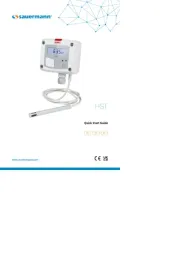
15 Augustus 2025
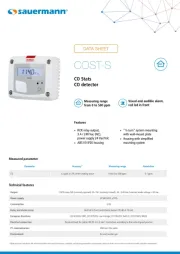
15 Augustus 2025
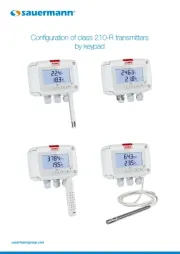
15 Augustus 2025
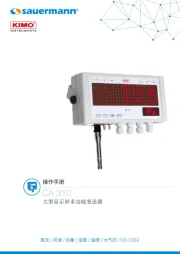
15 Augustus 2025
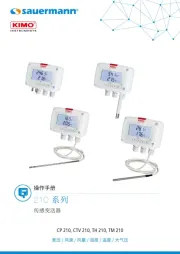
15 Augustus 2025
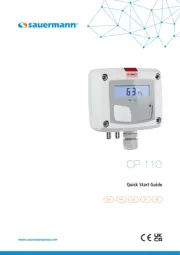
15 Augustus 2025
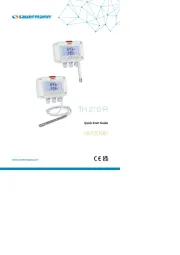
14 Augustus 2025
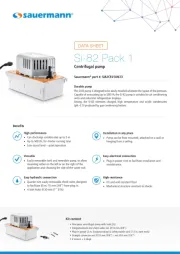
14 Augustus 2025
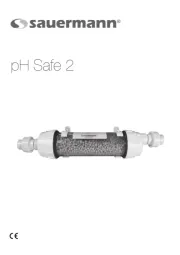
14 Augustus 2025
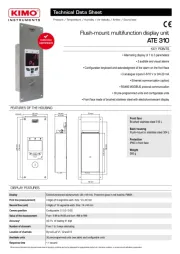
14 Augustus 2025
Handleiding Niet gecategoriseerd
- ZYCOO
- ANDYCINE
- Protector
- SMART Technologies
- Fitbit
- CkeyiN
- Lofrans
- CAME-TV
- Rusta
- Insignia
- Triax
- Fluke
- C3
- Blind Spot
- Vivitar
Nieuwste handleidingen voor Niet gecategoriseerd
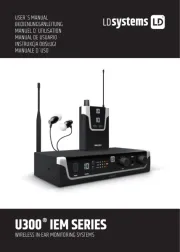
15 Augustus 2025

15 Augustus 2025
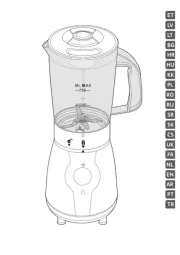
15 Augustus 2025
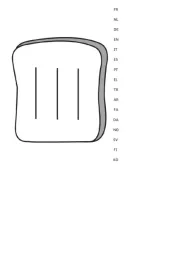
15 Augustus 2025
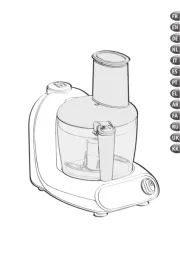
15 Augustus 2025
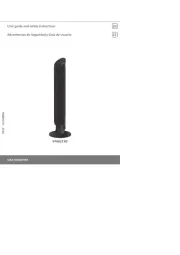
15 Augustus 2025
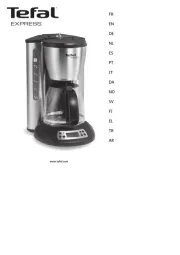
15 Augustus 2025

15 Augustus 2025

15 Augustus 2025

15 Augustus 2025